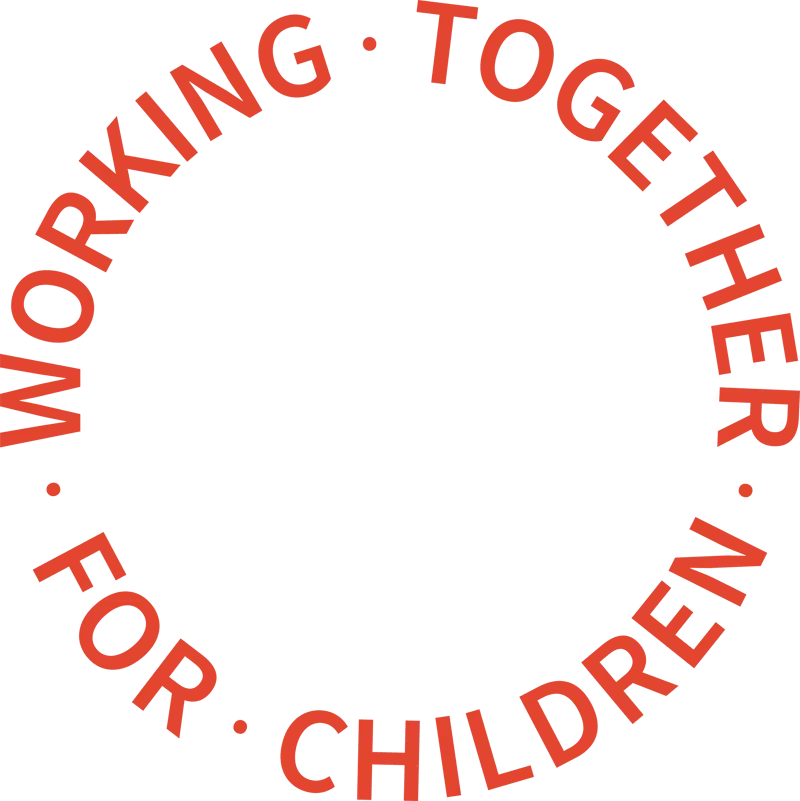CSE Expert Craig Barlow talks to Clare Jerrom about how social work practice needs to change to effectively protect children from Child Sexual Exploitation.
The whole approach to tackling Child Sexual Exploitation needs to be transformed in order to protect children and tackle offending behaviour from perpetrators, an expert in CSE has warned.
Craig Barlow, Independent Social Worker, consultant and trainer on the issue of CSE, says the approach to tackling exploitation needs to be tipped on its head. Rather than pushing or waiting for a disclosure from the child and working back from that point, Barlow says that professionals need to take the vulnerable child who could be at risk of CSE, look at what information is available on the child and potential perpetrator already, ascertain any additional information needed and put measures in place to try and protect the child and ‘disrupt’ the offender.
Barlow, who works with several local authorities to develop their approach to CSE, also highlights:
- Knowledge and confidence in authorities around CSE is no further on than when in-depth reports on the issue were published in 2013-2014
- Joint working is still very disjointed when tackling CSE
- Social workers are lacking the confidence to deal with CSE
- Local authorities need a root and branch approach to tackling CSE with social workers through to senior managers urgently requiring training
- Many authorities are desperate to commission CSE training but do not have adequate budgets
What is CSE?
Child Sexual Exploitation is child sexual abuse and the way it is differentiated from intra-familial abuse is that it is an organised network, Barlow explains. People in general including professionals associate CSE with teenage girls whereas it is an issue that affects boys too, although they are much less likely to make a disclosure than girls.
There has been a downward shift in terms of age groups with the Office of the Children’s Commissioner 2013 report following an inquiry into Child Sexual Exploitation in Gangs and Groups showing that the young people being targeted had shifted from 14-15 year olds down to 12-13 year olds with some victims as young as six years old.
According to the children’s commissioner, between November 2011 to 2012, 2,409 children and young people were the victims of sexual exploitation by groups and gangs. In addition, 16,500 children and young people were at risk of sexual exploitation.
While there is a common perception that CSE is a growing phenomenon, the reality is that is has always been a massive issue. Areas of growth, however, are around the awareness of the issue, media coverage of it and the ease of exploitation through other means such as online exploitation. “People think of CSE as being street based, but it’s far bigger than that on an online and international level,” said Barlow.
‘The knowledge is not much further on than in 2014’
The children’s commissioner for England’s report “If only someone had listened” into Child Sexual Exploitation in Gangs and Groups found that despite increased awareness and “a heightened state of alert” regarding child sexual exploitation, children were still slipping through the net and falling prey to sexual predators.
“Serious gaps remain in the knowledge, practice and services required to tackle this problem. There are pockets of good practice, but much still needs to be done to prevent thousands more children falling victim,” it added.
Barlow explains that following that report, there was a “flurry of activity”, and most local authorities now have some form of policy and procedure in place. However, he warned: “Once you go beyond the policy, the knowledge and confidence is not much better than in 2014.”
Social workers lack confidence
Barlow believes there is a downward pressure on practitioners from Ofsted and government, indirectly from the media and politicians which is then filtered down through a line management system. Barlow explains that as part of his work with the WillisPalmer mentoring programme, he was working with a young social worker following an Ofsted audit of his files, as the inspector had questioned why he was not dealing with a case as CSE. On further inspection, Barlow told the social worker that the reason he hadn’t treated the case as CSE was because it was not. Yes, it involved a vulnerable 13-year-old girl who was vulnerable to exploitation, but a lot of children known to local authorities are vulnerable and it does not always make it a definite sexual exploitation case and this practitioner was working to resolve the root problems in the family that had potential to “push” the child towards predators.
This is not an unusual situation, says Barlow, and social workers are under-confident, particularly in dealing with cases of CSE. “Social workers tend to have familiarity with intra-familial based cases as it is the old method of working where there is a clear indicator and a disclosure and you work back from that point rather than the bottom up approach and stepping into the dark,” said Barlow.
He added that sometimes social workers express concerns around technology but he says this is often a “displacement of anxiety”. “You need to know the dynamics of abuse, not be a technological genius,” he said. “Practitioners don’t have the confidence to do the self-directed element of investigation. Social workers also feel under-confident in relation to risk assessment and risk assessment skills and how to put together a good plan, drilling down to the nature of context of risk. When you provide social workers with training around this, you can see the relief as they learn how to defend their decision making.”
A lack of training in CSE
However, there is no mandatory training on CSE and while some local authorities like the London Borough of Southwark have commissioned training on CSE and made it mandatory, other areas would love to run courses but just don’t have the resources.
“Social workers have become de-valued over 20 years. The training is broken down into competencies rather than an overall theoretical approach to social problems and this comes from the government and organisational cultures,” said Barlow. “Some local authorities no longer see social workers as experts in their field, so social workers feel de-valued and it impacts on their confidence.”
Barlow explains that a root and branch approach to training in CSE is required as frequently managers do not attend the courses meaning that effective safeguarding is compromised through a lack of good leadership. Social workers leave the training courses and try and implement their new skills and knowledge but sometimes lack support from their managers.
Local Safeguarding Children’s Boards
The commissioner’s report also found that despite statutory guidance being issued by the government in 2009 to tackle CSE, at the point of the report being published, many agencies were only just starting to tackle the issue. Just 6% of Local Safeguarding Children’s Boards were meeting the requirements in full, with around one third not even meeting half of them.
While the effort is there now from LSCBs, they are not well informed by the phenomenon, said Barlow. Having reviewed one safeguarding policy, Barlow found the criteria and outcomes were at cross-purposes. “It was flawed in the assumptions it was making, they were setting the wrong markers,” he added.
Just 1,000 convictions out of 13,000 reported cases
Barlow has been working for the past 18 months on a theoretical model of a workbook which enables practitioners to organise their data, conduct a risk assessment, facilitate witness statements and plan risk assessments which can all be presented to the courts and fed into the safeguarding strategy to manage the risk of re-victimisation.
Early feedback shows the tool has provided social workers with the authority to demonstrate how they have conducted their assessments and come up with their evidence based conclusions.
Other work Barlow has been involved with is how to present information on prosecutions for CSE and trafficking to the courts, a vital piece of work given that successful prosecutions are low in number – and send a message to vulnerable children not to bother disclosing as it won’t result in the law helping you.
In her report into CSE, Labour MP Ann Coffey found that in six years in Greater Manchester there were just 1,000 convictions out of 13,000 reported cases of serious sexual offences against under 16-year–olds. She expressed concern that the Crown Prosecution Service highlighted that one victim wore cropped tops and that another had been described as a ‘slag’ by her father in cases that were declared “No Further Action”.
“This issue will not be tackled unless there is a sea change in public attitudes away from a culture of blaming children and young people for bringing about their own sexual exploitation,” said Ms Coffey. “Young people are still too often being blamed for being a victim. We need to get across the key message that whatever young people wear and however sexualised they appear, they are still children and need our protection.
She didn’t consent to being repeatedly raped
Barlow’s work involves presenting information to the courts in a way that may secure empathy from a jury. For example, in one case, there was a 19 year-old Romanian girl who was trafficked from Romania to come and work as a prostitute in south-east London. While she consented to traveling to England for that purpose, she did not consent to being held captive in a brothel for seven months and repeatedly raped.
However Barlow knew it would be difficult convincing the court. He therefore contacted the police in Romania and asked about the girl’s schooling: had she attended school? Had she finished her education? Had she any aspirations? The young woman was interviewed on video link in the courts; she answered that yes she had been to school until she was 15. She had enjoyed it, particularly studying English and Romanian. She would have loved to have gone to college but ‘I was too poor and so that was never an opportunity for me’.
This information was then presented to the courts in a way whereby she was a 19 year old young person, rather than a ‘young prostitute’. If she had been in England, young women of a similar age may be embarking on their second year at university or college which suddenly strikes a chord with the jury who can picture their daughter, niece, neighbour or girlfriend and made her decisions more rational in her circumstances.
This method of working with the courts has led to 22 successful prosecutions and there is a lot of work being done around this whole agenda in courts, Barlow explained.
While much work needs to be done in the CSE arena, Barlow is confident that taking a fresh approach to the issue will protect more children and tackle perpetrator’s offending behaviour. “We have got to change towards a bottoms-up approach working with the evidence to identify what you know and don’t know, so you know the information you need and what questions you need to ask and to who. Using your professional skills you need to take what you are seeing and hearing, the historic and current information concerning who is likely to be targeted, who may be the likely perpetrators and where the gaps may exist in relation to a protective network and use this information to put evidence forward to the courts and to make forward judgements for the child in the short, medium and long-term,” he concluded.
Craig Barlow is an Independent Forensic Risk Assessment Consultant and Trainer. To contact him email: enquiry@willispalmer.com



